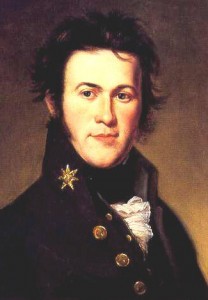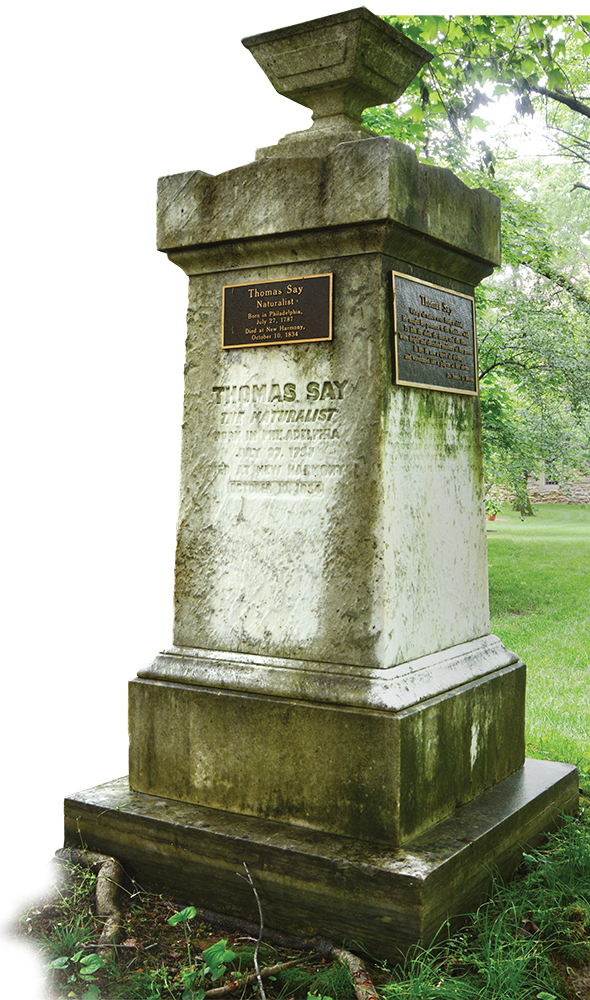
THOMAS SAY
Born: June 27, 1787,
Philadelphia, Pennsylvania.
Died: October 10, 1834 New Harmony, Indiana, age 47, of typhoid.
Portrait of Thomas Say, 1818, by Charles Willson Peale
Thomas Say is the namesake for the “Say’s Firefly” (Pyractomena angulata), the variety of firefly that has been proposed as the Indiana state insect.
Say is known as the “father of American entomology.” Born in Philadelphia in 1787, he was a self-taught naturalist, and one of the first American-born naturalists to gain renown. At age 25, he became a charter member of the Academy of Natural Sciences of Philadelphia.
In January 1826, Say arrived with William Maclure and other scientists and educators from Philadelphia on the famous “Boatload of Knowledge” that came down the Ohio River to New Harmony, Indiana, hoping to establish a model community where education and social equality would flourish. The group is credited with opening the Midwest to the next generation of scholars.
While the utopian community dissolved in 1827 and many of the scientists returned East, Say stayed on in New Harmony. The unassuming Say diligently continued his descriptions of insects and mollusks, culminating in classic volumes of work. In his lifetime, Say described well over 1,000 new species of beetles and over 400 other insects, including species in every important insect order. One of the new beetles he discovered in Indiana was Pyractomena angulata, now better known as Say’s Firefly. Many other species of wildlife, including coyote, birds and other beetles, have been named in honor of Say.

An obelisk marks Thomas Say’s grave in the side garden of the “Rapp-Maclure Mansion” in New Harmony. The marker is viewable to the general public from the sidewalk around the garden, but the mansion is privately owned.
Say is known as the “Father of descriptive entomology in the United States.”
It’s been said he transformed the study of American natural history from the pastime of “science oriented gentlemen, into a legitimate scientific field.” His publications made European scientists take note that the young United States had serious scientific research being done by native-born Americans.
The epitaph on Say’s grave in New Harmony captures his passion for the natural world:
“Votary of nature even from a child,
He sought her presence in the trackless wild;
To him the shell, the insect and the flower
Were bright and cherished emblems of her power.
In her he saw a spirit all divine,
and worshipped like a pilgrim at her shrine.”
Purdue University entomologist Tom Turpin noted that naming Say’s Firefly — truly a “bright and cherished” part of Indiana’s natural world — as the Indiana state insect would not just recognize the insect but also honor Say, a great figure in Indiana history.
Richard G. Biever is senior editor of Electric Consumer.
Be sure to check out these related stories:
- Carrying a Torch: Students continue credible quest to have firefly named state insect
- When it comes to an insect, Indiana draws a ‘blaaaaaaank’
- Oh, Say, can you see if it’s a Say’s Firefly?
- Harnessing the power of the lightning bug
- This firefly shines light on safety
- Create your own mascot; maybe win a plush Louie the Lightning Bug!
Be sure to check out these websites for more information about fireflies:



